Communist or Taiwan independence advocate; ethnic Taiwanese native or Mainlander.
It didn't matter. If the authoritarian government of dictator Chiang Kai-shek (蔣介石) believed you were a dissident, you could be locked up for decades or even executed.
“We're good buddies, we're brothers,” 84-year-old Huang Kuang-hai (黃廣海) said, putting his arm around 85-year-old Kue Chin-sun (郭振純), both of them smiling.

PHOTO: LOA IOK-SIN, TAIPEI TIMES
The two men — along with dozens of other former political prisoners incarcerated on Green Island — returned to the island recently, decades after their release to attend the inauguration of a reconstructed New Life Correction Center (新生訓導處).
Taiwan was officially under martial law from 1949 until 1987. From the 1950s thousands of political prisoners were kept first at the New Life Correction Center and then Oasis Village (綠洲山莊).
While it may seem perfectly normal for two former political prisoners to call each other friends, the relationship is more surprising when one learns about their backgrounds.
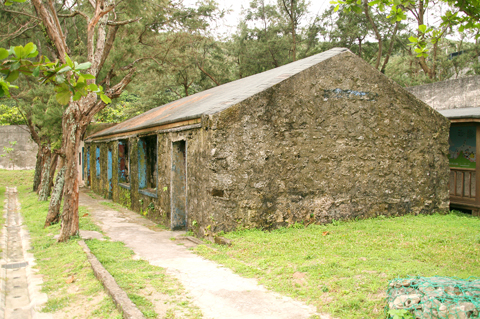
PHOTO: LOA IOK-SIN, TAIPEI TIMES
Huang was born in Guangzhou, China, in 1926, and came to Taiwan in 1950 as a soldier when the Chinese Nationalist Party (KMT) retreated after losing the civil war against the Chinese Communist Party (CCP). Although he was with KMT troops, Huang had always been fond of communism and to this date, the unification of Taiwan and China is still his biggest dream.
On the other hand, Kue is an ethnic Taiwanese born in 1925 and a diehard advocate of Taiwan independence.
“We're good buddies because we were both jailed for more than 20 years and for the most part, we were jailed together ... Of course we have different political views, but political views didn't really play a role when we lived together, worked together and helped each other out as political prisoners,” Huang said.
“We knew we disagreed with each other on ideology, so we never talked too much about it,” he added.
Although Huang was a CCP sympathizer, he never actually participated in any organization or political activities related to the party.
“I was sentenced to life in prison for complaining about Chiang Kai-shek in letters to friends in Hong Kong ... In those letters, I complained that Chiang was a dictator and the KMT regime was an authoritarian one,” he said.
“I was in the military at the time and they always checked what we wrote in letters — especially if the letters were going abroad — so they decided to charge me with 'repeatedly spreading false rumors' and sentenced me to life in prison,” he said.
Huang was sent to prison in 1954 and did not get out until 1975 when an amnesty was declared after Chiang passed away on April 5 that year.
During those 21 years, he was incarcerated in six prisons — two different Taiwan Garrison Command detention centers in Taipei City; the Ankeng Military Prison (安坑軍人監獄) in Sindian City (新店), Taipei County; the New Life Correction Center and the Oasis Village on Green Island; and Taiyuan Prison (泰源監獄) in Donghe Township (東河), Taitung County.
It was at Taiyuan and on Green Island that Huang met Kue.
Although Kue, was one of the many young Taiwanese who took up arms to fight the KMT following the 228 Incident in 1947, he escaped the mass arrests and executions that followed. He was less fortunate during the Martial Law Era.
In 1951, Kue campaigned for non-KMT candidate Yeh Ting-kuei (葉廷珪) in his victorious bid for Tainan City mayor. After the election, someone reported to the secret service that Yeh was connected to Thomas Liao (廖文毅), a Taiwan independence movement leader who formed the Provisional Government of the Republic of Formosa in Japan.
Kue said he was a supporter of Taiwan independence, but did not play a role in any advocacy organizations.
“They tortured me, trying to get me to admit to things I did not do, but I refused, so they could only sentence me to life in prison under the charge of 'repeated participation in unlawful assemblies' ... If I gave in, I could've been sentenced to death right away,” he said.
Kue said that when he was first arrested in Tainan, the secret service agents tore the nails off both his thumbs and his toes. He then was put into a big linen bag and dumped into a river for a few seconds.
“The worst thing was when they spilled sugar water all over me, and threw me into a courtyard — ants quickly found their way to the sweet taste, and bit me all over ... My hands had been tied behind me, so I could do nothing but roll on the ground,” Kue said.
Huang and Kue were sent to the New Life Correction Center in the 1950s and transferred to Taiyuan Prison in the 1960s. However, the two, along with all other political prisoners, were sent back to the newly constructed Oasis Village in the 1970s after several pro-independence prisoners, including Kue, organized a failed uprising.
Kue was also released when an amnesty was declared after Chiang's death.
Secret reports and torture were probably key reasons behind that high percentage of political prisoners who were falsely charged.
“During the initial years of the Martial Law Era, you could receive part of a dissident's property if you reported on the person and the person was ‘proven’ guilty,” said Tsao Chin-jung (曹欽榮), an independent researcher of political cases during the Martial Law Era.
“If the accuser wanted the money and the secret service agents needed names to meet their quota, then they tortured the victims into admitting whatever they wanted them to,” Tsao said.
While political prisoners were from all walks of life, another researcher who specializes in mainlander political prisoners, Huang Luo-fei (黃洛斐), said that Mainlanders were more likely to be reported as communists.
“Most Mainlanders in Taiwan had families and friends in China and they would miss their hometowns and their loved ones ... Well, a letter sent back home, a complaint about the KMT or saying that he or she wanted to go home could often be cited as evidence of a ‘connection to the communist bandits,’” Huang said.
According to an estimate from the Compensation Foundation for Victims of Improper Verdicts in the Martial Law Era (財團法人戒嚴時期不當叛亂暨匪諜審判案件補償基金會), more than 90 percent of political prisoners during the Martial Law period were unaware of the accusations made against them.
To date, the foundation has identified about 9,000 political victims from that time.
“But the real number is much higher because many government agencies in charge of handling political prisoners are still either unwilling to publicize lists or have already destroyed them,” a foundation board member, Chiu Rong-jeo (邱榮舉), told the Taipei Times.
“The Martial Law Era has a legacy that still impacts our society today ... For example, the culture of reporting on someone and the mentality of being overly careful in all things to avoid getting into trouble — especially in the government system,” Tsao said.
Issues that still need to be addressed are the unwillingness of public servants and officials who collaborated with the authoritarian regime to publicize all the official records of that period and the continued glorification of Chiang Kai-shek, Tsao said.
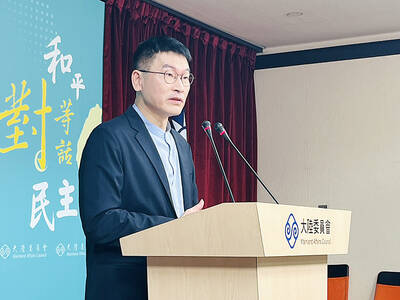
LOW RISK: Most nations do not extradite people accused of political crimes, and the UN says extradition can only happen if the act is a crime in both countries, an official said China yesterday issued wanted notices for two Taiwanese influencers, accusing them of committing “separatist acts” by criticizing Beijing, amid broadening concerns over China’s state-directed transnational repression. The Quanzhou Public Security Bureau in a notice posted online said police are offering a reward of up to 25,000 yuan (US$3,523) for information that could contribute to the investigation or apprehension of pro-Taiwanese independence YouTuber Wen Tzu-yu (溫子渝),who is known as Pa Chiung (八炯) online, and rapper Chen Po-yuan (陳柏源). Wen and Chen are suspected of spreading content that supported secession from China, slandered Chinese policies that benefit Taiwanese and discrimination against Chinese spouses of
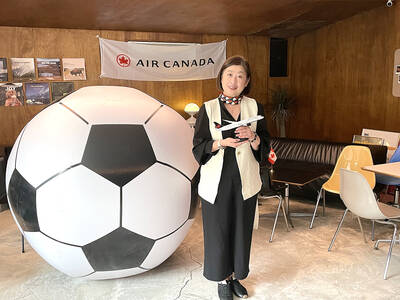
PROMOTION: Travelers who want a free stopover must book their flights with designated travel agents, such as Lion Travel, Holiday Tours, Cola Tour and Life Tours Air Canada yesterday said it is offering Taiwanese travelers who are headed to North America free stopovers if they transit though airports in Japan and South Korea. The promotion was launched in response to a potential rise in demand for flights to North America in June and July next year, when the US, Canada and Mexico are scheduled to jointly host the FIFA World Cup, Air Canada said. Air Canada offers services to 13 of the 16 host cities of the tournament’s soccer games, including Toronto and Vancouver; Mexico City, Guadalajara and Monterrey in Mexico; Atlanta, Georgia; Boston; Dallas; Houston;
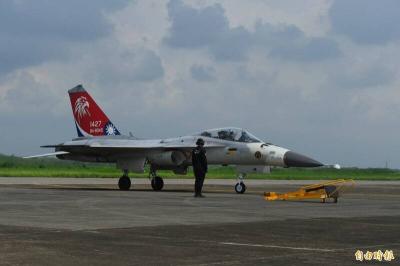
The US approved the possible sale to Taiwan of fighter jet spare and repair parts for US$330 million, the Pentagon said late yesterday, marking the first such potential transaction since US President Donald Trump took office in January. "The proposed sale will improve the recipient's capability to meet current and future threats by maintaining the operational readiness of the recipient's fleet of F-16, C-130," and other aircraft, the Pentagon said in a statement. Trump previously said that Chinese President Xi Jinping (習近平) has told him he would not invade Taiwan while the Republican leader is in office. The announcement of the possible arms
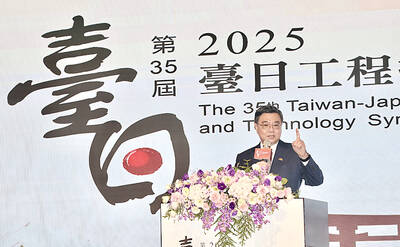
ALIGNED THINKING: Taiwan and Japan have a mutual interest in trade, culture and engineering, and can work together for stability, Cho Jung-tai said Taiwan and Japan are two like-minded countries willing to work together to form a “safety barrier” in the Indo-Pacific region, Premier Cho Jung-tai (卓榮泰) yesterday said at the opening ceremony of the 35th Taiwan-Japan Modern Engineering and Technology Symposium in Taipei. Taiwan and Japan are close geographically and closer emotionally, he added. Citing the overflowing of a barrier lake in the Mataian River (馬太鞍溪) in September, Cho said the submersible water level sensors given by Japan during the disaster helped Taiwan monitor the lake’s water levels more accurately. Japan also provided a lot of vaccines early in the outbreak of the COVID-19 pandemic,